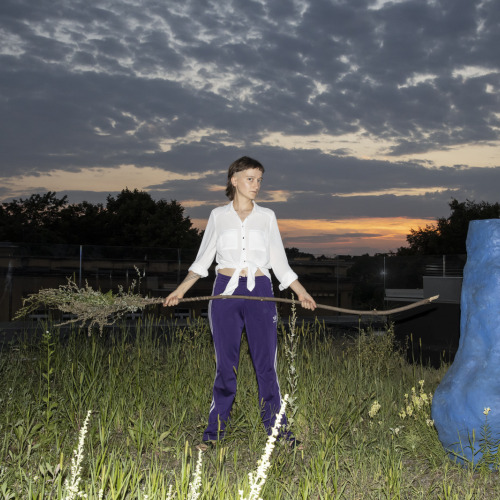
3 Solos
“It might sound horrible, but I
think that good things are often triggered off in the moments of despair. The
despair which prevents the use of the usual means. It’s like an allergy.” -- Vera Mantero
One mysterious thing, said the e.e. cummings* is an homage to
the tropical siren of the Parisian cabarets of the 1920s, Joséphine Baker. It
could be simply called: "Everything you ever wanted to know about
Joséphine Baker, but never dared to ask." She was a black dancer, singer and actress
(Zou-Zou and The Princess Tam Tam) from a poor American family. She became
famous as a dancer in the once notorious Folie-Bergère. During the war, she
collaborated with the French resistance and remained an active human rights
activist afterwards. She became the surrogate mother of twelve children in the
Rainbow Tribe community. In 1975, in Paris,
she was the first woman to be buried with military honours.
When Vera Mantero was offered to make a choreography dedicated to
Joséphine Baker (one of the selected choreographers was also Mark Tompkins),
she used the words of Joséphine’s compatriot and modernistic poet e.e. cummings
who described her as:"one mysterious thing, neither primitive or
civilised, or beyond time, in the sense that emotion is beyond
arithmetic".
The Joséphine of Vera Mantero confronts us naked, balancing on the brink
of being, beyond the glitter and the wild erotic. She is tragically bound to
this world, as every moment in human life is.
Critics commented:"Olympia
awakes, weary from dreaming. She had a bad night, that is evident. Insomnia and
colic have disturbed her serenity; her colour indicates as much.". Or:
"...this Olympia, a sort of female gorilla, grotesque in India rubber
outlined in black, on a bed, in a state of complete nudity, ...". And:
"The auguste jeune fille is a courtesan, with dirty hands and wrinkled
feet..." The year was 1865. Their critique was addressed at Eduard
Manet’s depiction of Olympia.
The model for his impressionistic painting was Victorine Meurent. "A
prostitute and a drunkard or a bald and defiant artist?" asks the
feminist art historian Eunice Lipton. Olympias the wife of Philip II of Macedonia,
could have provided the historical reference to Manet. It is said that
Alexander was begotten by Olympias and a divine serpent, and that she had her
husband’s mistress Cleopatra killed, together with their daughter.
The Olympia
of Vera Mantero is a unique paraphrase of Manet’s painting. A five-minute
palimpsest mixture of the impressionistic Olympia
and extracts from the book L’asphixiante Culture by Jean Dubuffet is "funny
and ostentatious" (Libération), a bizarre interpretation of the
simultaneous views of the reader/actor/model.
Mantero never takes dancing for granted. To dance is for her never
something obvious. Why dance? There is always that question mark. "What
does dance say? What can I say with dance? What am I saying when I’m
dancing?" In her improvised solo Perhaps she could dance first...
and think afterwards she thematises these creative questions. In her
performance, awarded at the Mudanças festival in 1994 and at the Rencontres
Choréographique de Bagnolet in 1996, she transforms the experiences of her
inner being into motion. Thus movement comes before the thought, before the
word, before the beginning and at the end.
One
mysterious Thing, said the e.e. cummings
Concept and performance: Vera Mantero; props: Teresa
Montalvão; characterisation: Carlota Lagido, Ana Araújo; lights: João Paulo Xavier; executive production: Forúm
Dança; support: Casa de Juventude de Almada, Re.Al / Amascultura;
production: Culturgest (Homage to Josephine Baker); 20 minut, 1996.
Olympia
Concept and dance: Vera Mantero; light: João Paulo Xavier; text: Jean Dubuffet; music: Gravation de musique Indien; 5 minut, 1993.
Perhaps
she could dance first… … and think afterwards
Danced by: Vera Mantero; set: André Lepecki; music:
Thelonius Monk “Ruby, My Dear”; costume: Vera Mantero;
luči/ light design: João Paulo Xavier; production: Pós
d’Arte 1991; financial support: Instituto da Juventude; supported by: Companhia de Dança; commissioned by Klapstuk
Festival 91 (on the occasion of Europalia Portugal), 20 minut, 1991.
Production and organisation: City of Women
In cooperation with Mladinsko gledališče


